This article needs additional citations for verification .(October 2021) |
![Michel Lock in his studio; portrait by Georg Sassnick [de] Michel Lock.jpg](http://upload.wikimedia.org/wikipedia/commons/thumb/6/62/Michel_Lock.jpg/278px-Michel_Lock.jpg)

Michel Lock, originally Hubert Michael Lock (27 April 1848, Cologne - 20 February 1898, Berlin) was a German sculptor.
This article needs additional citations for verification .(October 2021) |
![Michel Lock in his studio; portrait by Georg Sassnick [de] Michel Lock.jpg](http://upload.wikimedia.org/wikipedia/commons/thumb/6/62/Michel_Lock.jpg/278px-Michel_Lock.jpg)

Michel Lock, originally Hubert Michael Lock (27 April 1848, Cologne - 20 February 1898, Berlin) was a German sculptor.
His father was a merchant. He had sixteen siblings, and began an apprenticeship as a wood carver at the age of twelve. Most of his works were small decorative sculptures for churches. After completing his traditional wanderjahre, he returned to Cologne and worked for the sculptor, Wilhelm Albermann; creating ornamental works for the homes of the wealthy.
In 1866, he relocated to Hannover, and found employment in the workshops of Carl Dopmeyer , where he was allowed to create his first independent works. In 1868, when he was twenty, he accepted an invitation from a plasterer named Rössemann, and went to Berlin. When Rössemann died in 1871, Lock was hired by the firm of "Zeyer & Drechsler", as a supervisor for their forty assistants. He had a falling out with them three years later, and decided to take a study trip to Italy.
When he returned, he went back to Berlin, doing modelling and stonework for the new Nationalgalerie. He was permitted to use the workshop in his spare time, so he had another opportunity to create independent works. By 1877, he was able to establish his own studio; taking commissions for work on public and private buildings. In 1884, his statue of Daedalus, holding Icarus in his arms, received a gold medal at an exhibition in Brussels. He was awarded two more gold medals, in 1890 and 1896; both at the Große Berliner Kunstausstellung. Some of his larger works were done in collaboration with Emil Hundrieser ; notably a figure of Berolina, created for a state visit by King Umberto I of Italy.
His most familiar work is "Ich habe keine Zeit müde zu sein " (I have no time to be tired, 1891), which depicts Kaiser Wilhelm I, in his armchair, with the Angel of Death by his side. [1] The title is taken from one of Wilhelm's favorite sayings. After Lock's death, a full-sized marble copy was created by Franz Tübbecke (1856–1937) and displayed at the Hohenzollern Museum in Monbijou Palace. It was lost when the palace was destroyed in World War II. [2]

Franz Seraph Lenbach, after 1882, Ritter von Lenbach was a German painter known primarily for his portraits of prominent personalities from the nobility, the arts, and industry. Because of his standing in society, he was often referred to as the "Malerfürst".

Wilhelm Lehmbruck was a German sculptor.
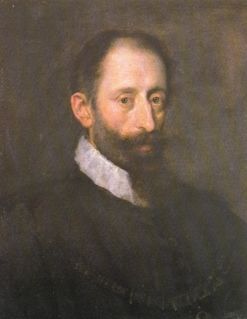
William V, called the Pious, was Duke of Bavaria from 1579 to 1597.

Carl Joseph Begas, or Karl Begas, was a German painter who played an important role in the transition from Romanticism to Realism. He was the first in a multi-generational "dynasty" of artists.
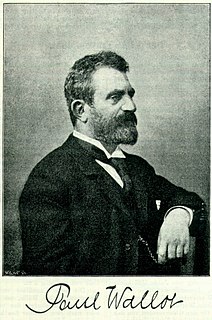
Johann Paul Wallot was a German architect of Huguenot descent, best known for designing the Reichstag building in Berlin, erected between 1884 and 1894. He also built the adjacent Palace of the President of the Reichstag, finished in 1904, and the former Saxon Ständehaus state diet building of 1906 at Brühl's Terrace in Dresden.

Friedrich Wilhelm Freiherr von Erdmannsdorff was a German architect and architectural theoretician, and one of the most significant representatives of early German Neoclassicism during the Age of Enlightenment. His work included Wörlitz Palace in the present-day Dessau-Wörlitz Garden Realm, one of the earliest Palladian buildings on the European continent. His most well-known student was Friedrich Gilly, the teacher of Karl Friedrich Schinkel.

Baroque sculpture is the sculpture associated with the Baroque style of the period between the early 17th and mid 18th centuries. In Baroque sculpture, groups of figures assumed new importance, and there was a dynamic movement and energy of human forms—they spiralled around an empty central vortex, or reached outwards into the surrounding space. Baroque sculpture often had multiple ideal viewing angles, and reflected a general continuation of the Renaissance move away from the relief to sculpture created in the round, and designed to be placed in the middle of a large space—elaborate fountains such as Gian Lorenzo Bernini‘s Fontana dei Quattro Fiumi, or those in the Gardens of Versailles were a Baroque speciality. The Baroque style was perfectly suited to sculpture, with Bernini the dominating figure of the age in works such as The Ecstasy of St Theresa (1647–1652). Much Baroque sculpture added extra-sculptural elements, for example, concealed lighting, or water fountains, or fused sculpture and architecture to create a transformative experience for the viewer. Artists saw themselves as in the classical tradition, but admired Hellenistic and later Roman sculpture, rather than that of the more "Classical" periods as they are seen today.

Johann Heinrich Strack was a German architect of the Schinkelschule. His notable works include the Berlin Victory Column.

Johann Friedrich Wilhelm Albermann was a German sculptor.
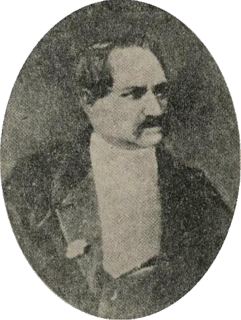
Theodor Erdmann Kalide was a German sculptor.

Gabriël Grupello was a Flemish Baroque sculptor who produced religious and mythological sculptures, portraits and public sculptures. He worked in Flanders, France and Germany. He was a virtuoso sculptor who enjoyed the patronage of several European rulers.

Wilhelm Georg Johannes Wandschneider was a German sculptor.

Carl Conrad Albert Wolff was a German sculptor, and medallist.
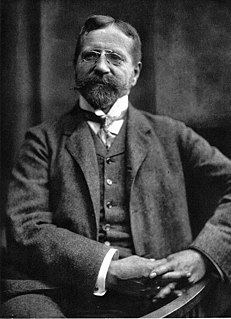
Hugo Vogel was a German painter, known primarily for historical scenes and portraits.
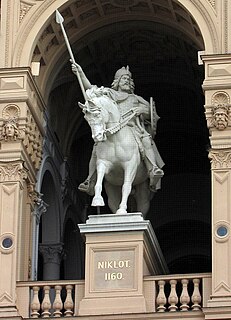
Christian Friedrich Genschow was a German sculptor. Although best known for his works at the Schwerin Palace, most of his creations were in smaller formats, in the tradition of the Berliner Bildhauerschule.

Christen Christensen was a Danish sculptor and medallist. His works as a medallist include the Royal Danish Academy of Fine Arts' C. F. Hansen Medal and Thorvaldsen Medal.
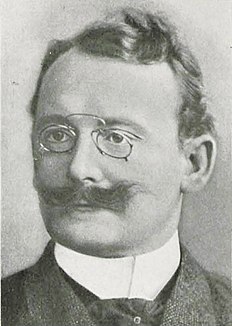
Hans Dammann was a German sculptor; known primarily for his war memorials.
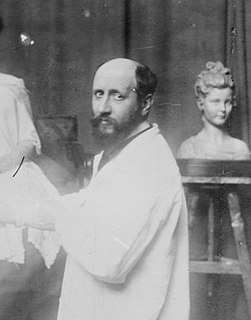
Ferdinand Theodor Martin Schauß was a German sculptor and medallist.

Große Berliner Kunstausstellung , abbreviated GroBeKa or GBK, was an annual art exhibition that existed from 1893 to 1969 with intermittent breaks. In 1917 and 1918, during World War I, it was not held in Berlin but in Düsseldorf. In 1919 and 1920, it operated under the name Kunstausstellung Berlin. From 1970 to 1995, the Freie Berliner Kunstausstellung was held annually in its place.
Wilhelm August Hermann Feuerhahn was a German sculptor particularly known for his architectural sculpture.
![]() Media related to Michel Lock at Wikimedia Commons
Media related to Michel Lock at Wikimedia Commons